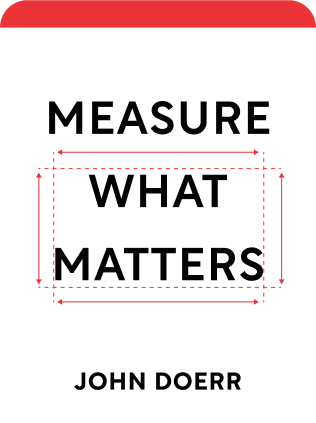

This article is an excerpt from the Shortform summary of "Measure What Matters" by John Doerr. Shortform has the world's best summaries of books you should be reading.
Like this article? Sign up for a free trial here .
What is a personal OKR? Why should members of your team establish individual OKRs?
Personal OKRs are sets of goals established by individual team members, with the help of managers and supervisors. As opposed to check-ins, using the individual OKR system allows employees to each have measurable goals.
Find out more about the personal OKR system.
Start With the Executive Team and Upper Management
So how do you create personal OKRs? You can follow these steps to create personal OKRs that stick, and learn how to stick to them and help your team achieve their goals.
Use the company’s mission statement and strategic plan to create top-line OKRs. There are three reasons to start at the top, and to start small:
- Executives and managers need to know their own OKRs before their direct reports can align their individual goals with those of the company. Often, organization-level key results will trickle down the hierarchy, becoming the objectives of departments, who will then create their own key results to meet those objectives.
- In the beginning, implementing OKRs won’t be a smooth process. Work out the biggest kinks before you continue the rollout to other tiers. It may take several phases before you implement OKRs company-wide.
- You need to establish buy-in. Employees won’t commit to the process if their bosses don’t publicly model and commit to it. Establish your own commitment first before asking for anyone else’s. To this end, create your own personal OKRs, independent of your team’s OKRs.
Support the OKRs of Your Team and Direct Reports
If you think a departmental OKR is so important that it could use company-wide support, elevate it to a company-wide OKR. If you think a particular key result is at risk of not being achieved on time, elevate it to the level of an objective and give it its own key results to make the path to its achievement clear.
CFRs: The Tools of Continuous Performance Management
Just as OKRs are your tools for implementing Doerr’s improved goal-setting system, CFRs are your tools for implementing a continuous performance management system.
- C: Conversations between employees and managers
- F: Feedback both from and to managers and among peers
- R: Recognition from peers and managers for small and large contributions toward goals
OKRs and CFRs reinforce one another. You need both the hard data of OKRs and the interpersonal relationships fostered by CFRs for your company to thrive.
Checklist for Developing a Successful Personal OKR System
Although the OKR system is relatively simple, it can be hard to implement in the beginning. Review these tips to make OKRs work for you:
- Tackle no more than 3-5 objectives per cycle, and choose carefully (a cycle could be quarterly, monthly, or annually). Trying to work on more than 5 OKRs at one time dilutes your focus and spreads your resources too thin.
- Similarly, only assign 3-5 key results to each objective. If you need more key results to reach an objective, that’s a sign the objective isn’t narrow enough or isn’t framed well.
- Make sure your key results are specific, comprehensive, and aligned. Successfully completing your key results must culminate in achieving your objective. In other words, if you complete all your key results but you still don’t meet your objective, you don’t have effective OKRs.
- Approach goal-setting from the bottom up. Employees should consult with their managers to create at least half of their OKRs themselves (the other half may come from above, through the more traditional top-down approach). This increases employee engagement and ownership.
- In the same vein, don’t dictate others’ goals. Collective agreement and engagement are crucial for the functioning of the OKR system.
- Continually reassess OKRs, and if they’re no longer relevant, change or discard them, even in the middle of a cycle.
- Set high goals. Your OKRs should be a mix of “committed OKRs,” objectives that must be met for your company to function and thrive, and “aspirational OKRs,” objectives that make you feel a little uncomfortable because you’re unsure you can attain them. These kinds of OKRs stretch the entire company to achieve more than anyone thought possible, a key feature of innovative companies.
- Don’t base performance reviews or salaries on whether or not employees meet their OKRs. The OKR system is meant to help everyone in the company be more focused and productive; no one should use it as a way to punish employees who aim high and fail.
- Realize that hitting on an effective OKR system takes time, so be patient with yourself, your colleagues, and your administration.
Using personal OKRs can help your employees succeed. You can use these ideas on how to establish an individual OKR system.

———End of Preview———
Like what you just read? Read the rest of the world's best summary of John Doerr's "Measure What Matters" at Shortform .
Here's what you'll find in our full Measure What Matters summary :
- How Google uses OKRs to rally 100,000 employees in the right direction
- How to avoid setting useless OKRs, and how to set great ones
- Key subtle behaviors your team must master to make OKRs work






